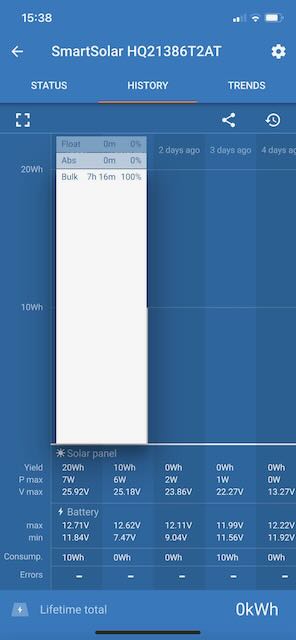I'm testing a small solar panel (6-7W) > charge controller > battery (12V) & load (12V - 5V USB charger) setup using a SmartSolar MPPT 100/15 but I'm not understanding the thresholds for switching from Bulk to Absorption to Float or if the current presets are suitable for my set up.
The battery I'm using is a Duracell DR7-12 12V / 7Ah battery. Everything I've read about batteries like this describe 'fully charged' as approx. 12.5-ish volts and this battery has reached that level of charge in the charge controller's Bulk mode plenty of times - even with Load connected - but so far, even with no Load and the solar panel at 7W - I've not seen the battery get past 12.7V so the charge controller has stayed in Bulk mode.
The part I don't understand is that on the 'Gel Victron deep discharge (2)' battery preset - the threshold for switching from Bulk to Absorption appears to be set at 14.40V and then Float is set at 13.80V.
So - two questions...
1) Should I really be expecting this 12V battery to be hitting a charge of 14.40V before coming out of Bulk charge mode or should I be creating a preset more suited to this battery?
2) If Float is the stage after Absorption - why is it set at a lower voltage?
Thanks.

